Who We Are
El Salvador (“The Saviour”), officially the Republic of El Salvador in Central America, is bordered on the northeast by Honduras, on the northwest by Guatemala, and on the south by the Pacific Ocean. El Salvador’s capital and largest city is San Salvador, with an estimated metro population of over 2.5 million people. The country’s current population is approximately 7 million. We are home to Bitcoin Beach and the developing Bitcoin City, with a unbeatable tax regime and incentives designed to turn this beautiful country into a world-class destination for sovereign individuals.
~~~
Brief History
The region has historically been controlled by several different Mesoamerican nations: the Lenca, the Mayans, and then the Cuzcatlecs. Archaeological monuments also suggest an early Olmec presence around the first millennium BC. In the 16th century, the Spanish Empire conquered the territory, incorporating it into the Viceroyalty of New Spain ruled from Mexico City. However, they had little to no influence in the daily affairs of the isthmus, which was colonized in 1524. In 1609, the area was declared the Captaincy General of Guatemala, but gained independence from Spain in 1821. It was then forcefully incorporated into the First Mexican Empire, then seceded, joining the Federal Republic of Central America in 1823. When the federation dissolved in 1841, El Salvador became a sovereign state, then formed a short-lived union with Honduras and Nicaragua called the Greater Republic of Central America, which lasted from 1895 to 1898. From the late 19th to the mid-20th century, El Salvador endured chronic political and economic instability characterized by coups, revolts, and a succession of authoritarian rulers. Persistent socioeconomic inequality and civil unrest culminated in the devastating Salvadoran Civil War from 1979 to 1992, fought between the military-led government backed by the United States, and a coalition of left-wing guerrilla groups. The conflict ‘officially’ ended with the Chapultepec Peace Accords, though civil violence continued for much of the next three decades until the territorial control plan was initiated by the current administration, successfully reducing violence to historic lows, and making El Salvador the safest country in the Americas.
Economy
El Salvador’s economy has always been dominated by agriculture, beginning with the Spanish taking control of the indigenous cacao plantations in the 16th century. Production of the crop was centered in Izalco, and the cultivation of balsam from the ranges of La Libertad and Ahuachapan was also important. This was followed by a boom in use of the indigo plant (añil in Spanish) in the 19th century, mainly for its use as a dye. Thereafter the focus shifted to coffee, which by the early 20th century accounted for 90% of export earnings. El Salvador has since reduced its dependence on coffee and embarked on diversifying its economy by opening up trade and financial links and expanding the manufacturing sector. The currency used in the country has changed several times. The colón, the established 1892, was replaced by the United States dollar in 2001. Bitcoin, of course, was added as a legal tender in 2021. Reductions in organized crime throughout the country since 2019 have created significant opportunity and revitalized the local tourism industry. Among 77 countries included in a 2021 study, El Salvador was one of the least complex economies for doing business.
Banking
At most banks, resident foreigners allowed to open personal accounts. But be prepared to answer many questions about your source(s) of income, level of usage, personal and professional situation, and be prepared to show proof of a local address, like a copy of a lease or a local bill as well as your Passport and a NIT (the tax identification number for El Salvador, which can be obtained easily and affordably). Businesses can open accounts at most banks even if they are 100% foreign-owned. resident foreigners may also be able to open 150% secured accounts for credit cards.
Climate
El Salvador has a tropical climate with pronounced wet and dry seasons, but topography plays an important role in the experience you will have. Temperatures vary primarily with elevation and wind speed and show little seasonal change. The Pacific lowlands are uniformly hot; the central plateau and mountain areas are more moderate. The rainy season extends from May to October; this time of year is referred to as ‘invierno’ or winter. Almost all the annual rainfall occurs during this period. Yearly totals, particularly on southern-facing mountain slopes, can exceed 2000 mm (~80 in). Protected areas and the central plateau receive less, although still significant, amounts. Rainfall during this season generally comes from low pressure systems formed over the Pacific and usually falls in heavy afternoon thunderstorms. From November through April, the northeast trade winds control weather patterns; this time of year is referred to as ‘verano’, or summer. During these months, air flowing from the Caribbean has lost most of its precipitation while passing over the mountains in Honduras. By the time this air reaches El Salvador, it is dry, hot, and hazy, and the country experiences hot weather, excluding the northern higher mountain ranges, where temperatures are generally cooler. For up-to-date forecasts, check the Weather Underground.
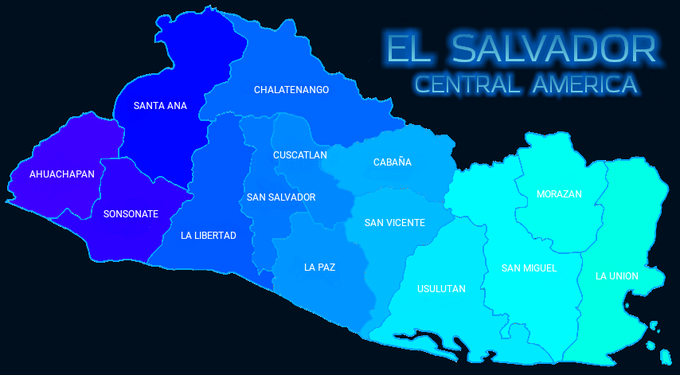
Administrative Districts
El Salvador is divided into 14 departments (departamentos), which in turn are subdivided into 262 municipalities (municipios), although this number will be reduced greatly in the next year as many local governments are consolidated. The #BitcoinCity will be located in the south-eastern region of La Union.
Gross Domestic Product
GDP for 2021 was ~$60 billion growing 4.2% over the last year. The service sector is the largest component at 65%, followed by the industrial sector at 25% and agriculture at 11%. 2019 exports (pictured) exceeded $6 billion.
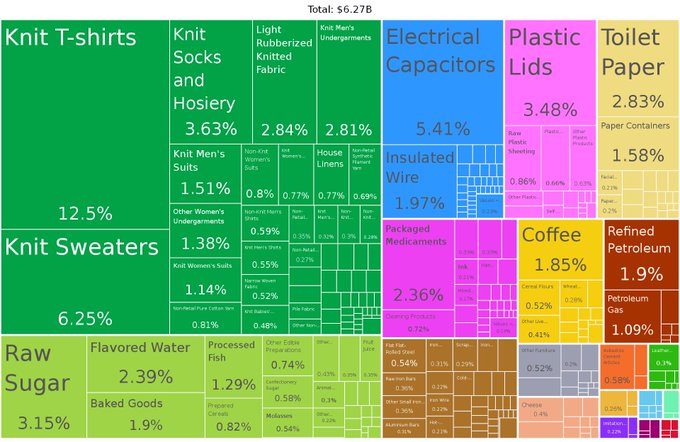
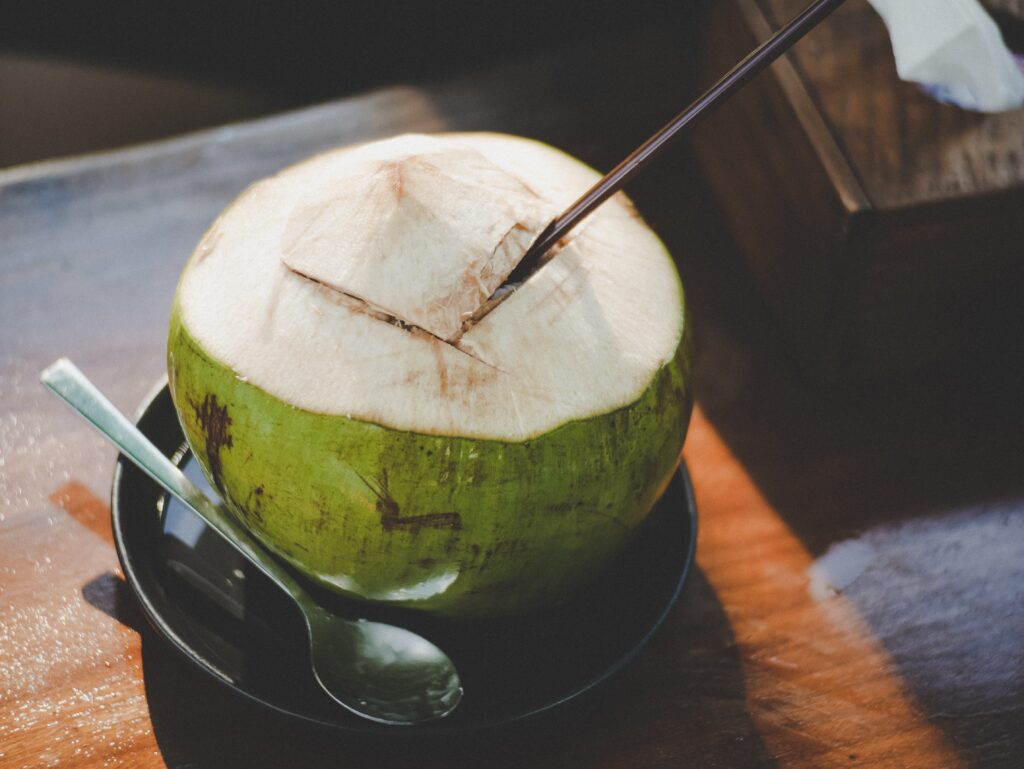
Trade
El Salvador was the first country to ratify the Central America-Dominican Republic Free Trade Agreement (CAFTA). It requires that the government adopt policies that foster free trade and has bolstered exports of processed foods, sugar, and ethanol, and apparel. We also have recently formed free trade agreements with both China and South Korea.
Energy
The energy industry is diversified across fossil fuels, hydro, and renewables (mainly geothermal) for local electricity production, along with oil imports. El Salvador has an installed capacity of 1,983 MW generating 5,830 GWh of electricity annually, 84% from renewables.
Tourism
Tourism contributes 11% of total GDP, supporting over 300,000 jobs (almost 12% of total employment) Dollarization, the Bitcoin law, direct flights of 4 to 6 hours from most cities in the US, and incredible waves 🏄 are factors that attract tourists from all over the world.
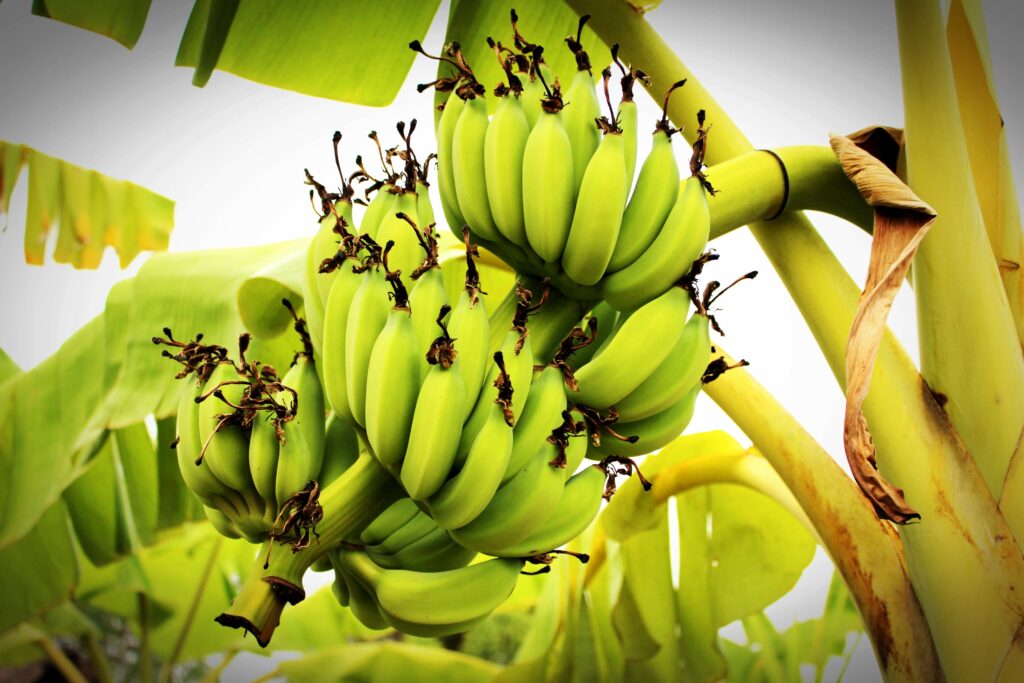
Healthcare
In 2020, the government permanently converted the country’s main convention center into the largest hospital in Latin America, featuring a blood bank, morgue, radiology area, and 1,000 ICU beds (increasing to 2,000 beds total once phase 3 is completed). There are numerous public and private healthcare facilities, from laboratories, clinics, diagnostic hospitals, and outpatient services for humans, and we have the one and only Chivo Pets, a Bitcoin-funded veterinary center – also the largest of its kind in Central America.
Air Travel
The airport serving international flights in El Salvador is the Monseñor Óscar Arnulfo Romero International Airport. This airport is located about 40 km (25 mi) southeast of San Salvador. If you want to share your flight information with loved ones or transportation services, this is the website to share. Another Airport is planned in the Eastern part of the country to serve Bitcoin City. For more information about air travel, see our tourists page.
Electrical
El Salvador uses Type ‘A’ and Type ‘B’ sockets.


Demographics
86% of Salvadorans identify with Mestizo ancestry. 13% of Salvadorans report as White, mostly of ethnically Spanish people, while there are also French, German, Swiss, English, Irish, and Italian descendants.
Language
Castillian (Spanish) is the official language and is spoken by virtually all inhabitants, although some indigenous people speak also their native tongues, such as Nawat and Poqomam. Q’eqchi’ is spoken by immigrants of Guatemalan and Belize. Like other regions of Central and South America, Salvadoran use voseo. This refers to the use of “vos” as the second person pronoun, instead of “tú”. The local Spanish vernacular is called caliche, which is considered informal.
Religion
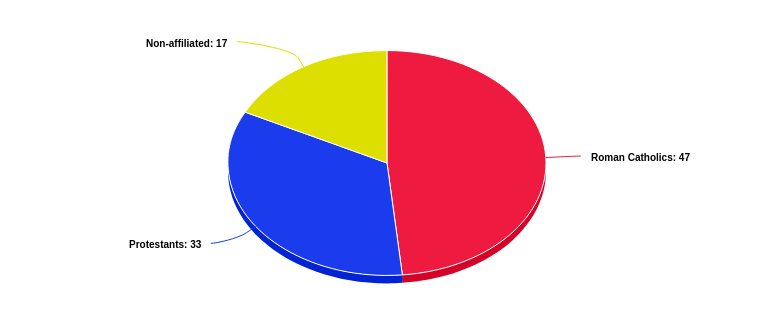
Where should new people live first?
We recommend renting an apartment in the capital city, at least for the beginning of your stay here. You can find many options on Facebook Marketplace.
And if you are a Bitcoiner or want to start or work for a Bitcoin-related business, check out San Salvador’s ‘Bitcoin-Zone’ in Colonia Escalon!
Why should you live here first?
Primarily for access to services: taxis, deliveries, police, ambulance, treated water, better power grid, etc. You’ll also be closer to malls, grocers, and a greater variety of restaurants. We recommend staying in town until you are comfortable with your surroundings and have reliable personal transport. But if you are adventurous, or have lived abroad in developing areas before and know what to expect, then the world is your oyster!
Currently, commercial property in San Salvador demands an average rental price of $14 per square meter. Preferred locations (red zones) can list for $25-$30 per square meter. The heat map below indicates listing locations.
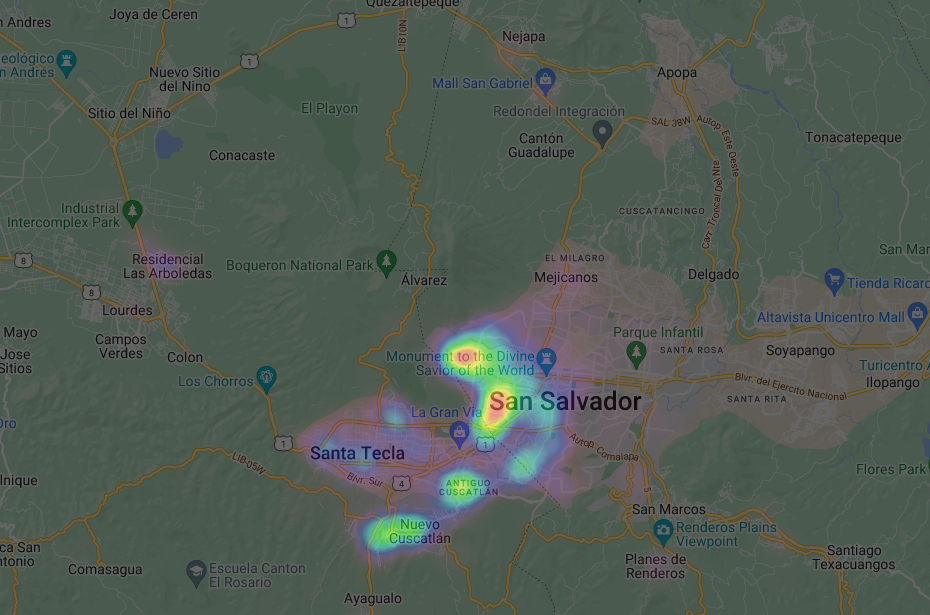
Homes in the city demand an average price of $1041 per square meter, up 5.5% over last year.
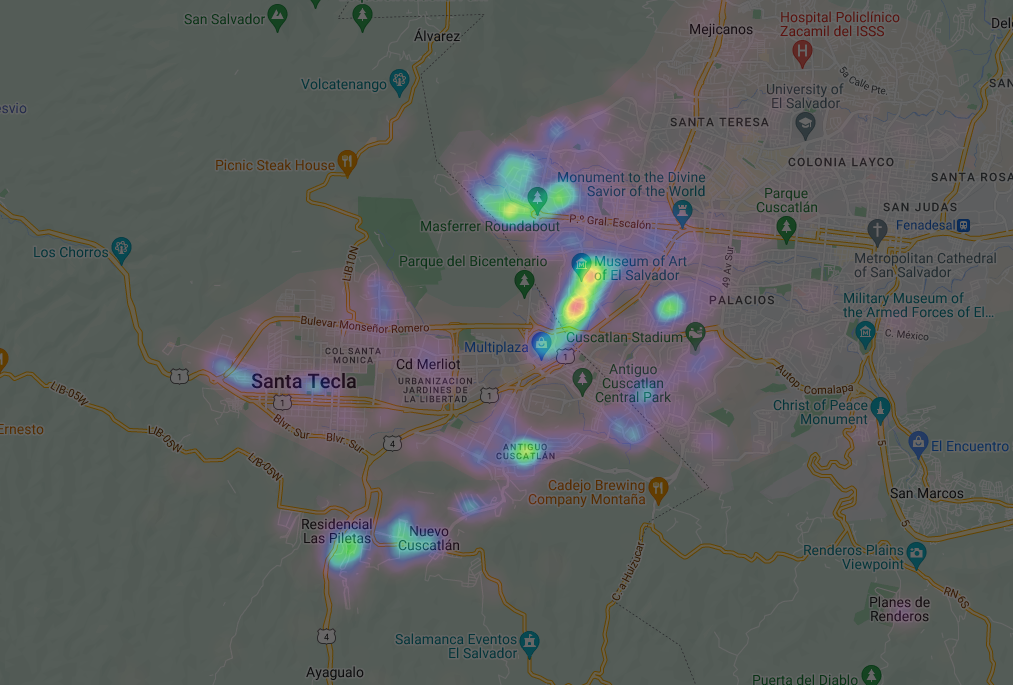
Where should I get a SIM card / phone plan / internet service?
Claro is somewhat reliable, and you can pay w/ Bitcoin via their self-hosted BTCPay Server. Their shops are in most malls and shopping districts, but there isn’t always someone on staff who speaks English, so come prepared with your translation app loaded with basic phrases and questions you might have.
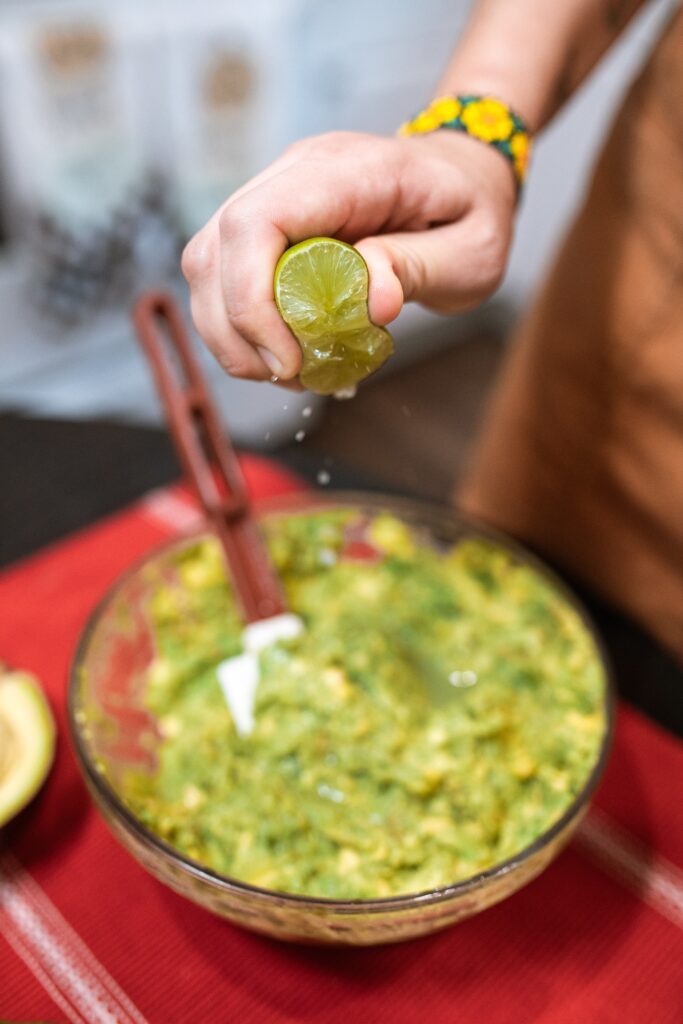
Are there franchises I am familiar with there?
Yes: Walmart, Radio Shack, Burger King, Subway, McDonald’s, Papa John’s, Taco Bell, Wendy’s, Starbucks, Pizza Hut, and more all have locations in the capital. Plus, Amazon ships here relatively cheaply as well (they calculate customs on your behalf).
What are the holidays in El Salvador?
You can add this calendar. (In .ics format)

News Outlets Covering El Salvador
There is a handy, English-language blog featuring top events at El Salvador in English, and you can also follow them on Twitter. Other international news sites include Associated Press, BBC, Independent, Al Jazeera, and NBC. For the ocean-going set, there is Noonsite, and a popular local organization is elsalvador.com
Misc.
You can learn more about El Salvador’s laws on firearms here and here.
How to Communicate Professionally in Written Spanish
As you prepare your trip, you’ll need to communicate with a wide variety of individuals – the hotel reservation agent, logistics dispatchers, real estate agents, and so on. While chat applications like WhatsApp are very popular, e-mail can still get the job done for longer form queries. Additionally, even in a less formal text message format, a friendly greeting and courtesy title can go a long way toward building rapport with whomever you contact. While you may be aware of how to do this in English, the same logic of salutations doesn’t always translate well in Spanish, so here are some tips:
In personal correspondence, the equivalent of “dear” is querido or querida (the past participle of querer), depending on the gender of the person. Querido is used for men, querida for women; plural forms queridos and queridas can also be used. In Spanish, it is the rule to follow the greeting with a colon rather than the comma used in English. Use of a comma is seen as an Anglicism. For example:
Querido Roberto: (Dear Roberto,)
Querida Ana: (Dear Ana,)
Queridos Juan y Lisa: (Dear Juan and Lisa,)
Note that in Spanish the masculine form, queridos, is used if the recipients include people of both sexes. However, querido is too casual for business correspondence, especially when you aren’t a friend of the recipient. Use estimado or estimada instead. The word literally means “esteemed,” but it is understood the same way as “dear” would be in English:
Estimado Sr. Rodríguez: (Dear Mr. Rodríguez,)
Estimada Sra. Cruz: (Dear Mrs./Ms. Cruz,)
Estimada Srta. González: (Dear Miss González,)
Spanish doesn’t have a true equivalent of the English courtesy title Ms. (and in Spanish, the distinction between señora and señorita, traditionally translated as “Mrs.” and “Miss,” respectively, can be one of age rather than marital status). It normally is fine to use the courtesy title of Sra. (the abbreviation for señora) if you don’t know whether a female recipient of the letter is married. Good advice is to use Sra. unless you know the woman prefers Srta. If you don’t know the name of the person you’re writing to, you can use the following:
Muy señor mío: (Dear sir,)
Estimado señor: (Dear sir,)
Muy señora mía: (Dear madam,)
Estimada señora: (Dear madam,)
Muy señores míos: (Dear sirs, dear sirs/madams,)
Estimados señores: (Dear sirs, dear sirs/madams,)
The Spanish equivalent of “to whom it may concern” is “a quien corresponda” (literally, to the one responsible).
In English, it is common to end a letter with “Sincerely.” Again, Spanish offers a greater variety. Although the following closings for personal letters may sound overly affectionate to English speakers, they are quite commonly used:
Un abrazo (literally, a hug)
Un fuerte abrazo (literally, a strong hug)
Cariñosos saludos (roughly, kind regards)
Afectuosamente (affectionately)
The following are common with close friends or family members, although there are many others that can be used:
Besos y abrazos (literally, kisses and hugs)
Besos (literally, kisses)
Con todo mi cariño (with all my caring)
Con todo mi afecto (with all my affection)
In business correspondence, the most common ending, used in much the same way as “sincerely” in English, is “atentamente”. That can also be expanded to “le saluda atentamente” or “les saluda atentamente”, depending on whether you’re writing to one or more persons, respectively. A more casual ending that can be used in business letters is “Cordialmente”. Longer salutations include “saludos cordiales” and “se despide cordialmente”. Although this language may sound flowery to English speakers, it is not unusual in Spanish. If you are expecting a response from a business correspondent, you can close with “esperando su respuesta”. As is common in English, the salutation is typically followed by a comma. If you’re adding a postscript (posdata in Spanish), you can use P.D. as the equivalent of “P.S.” (source)

Various Maps of El Salvador (right-click and open image in new tab to view full-size)
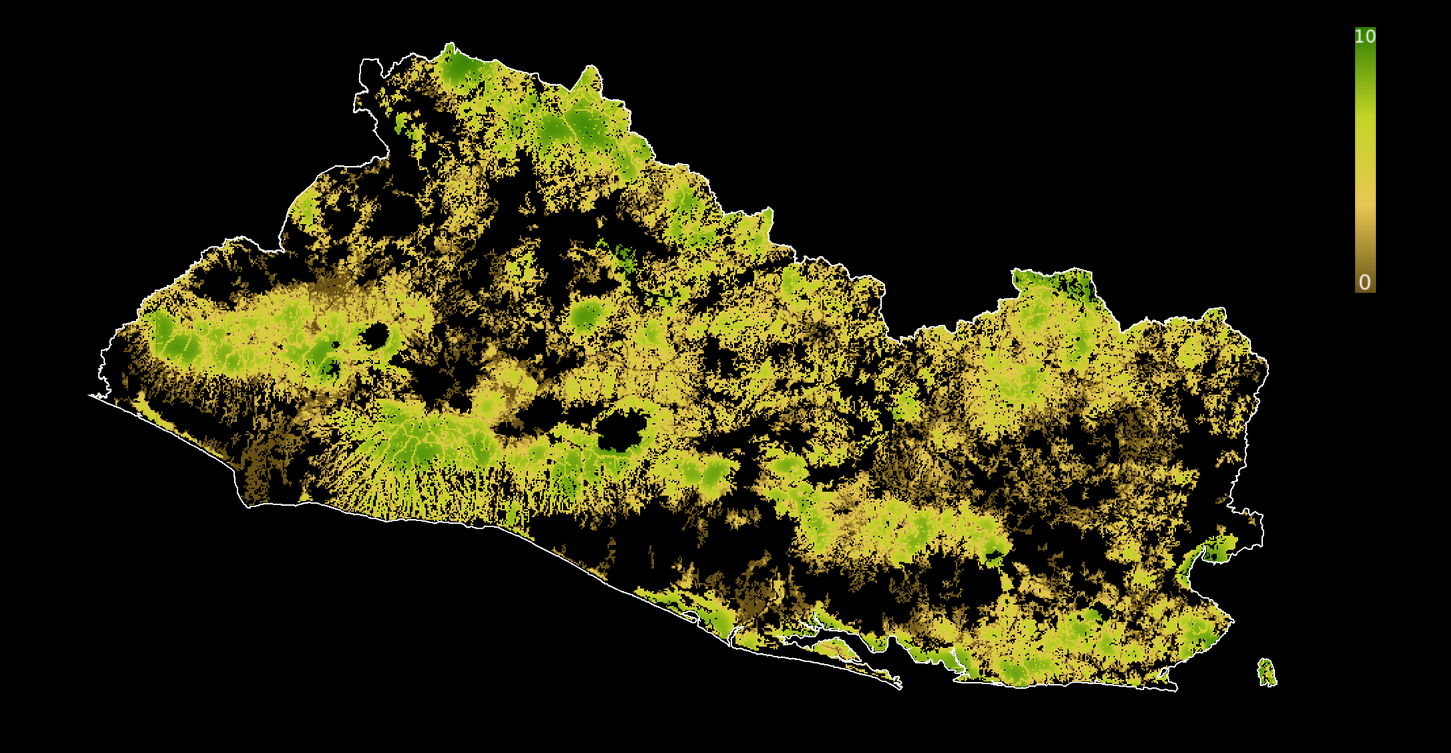

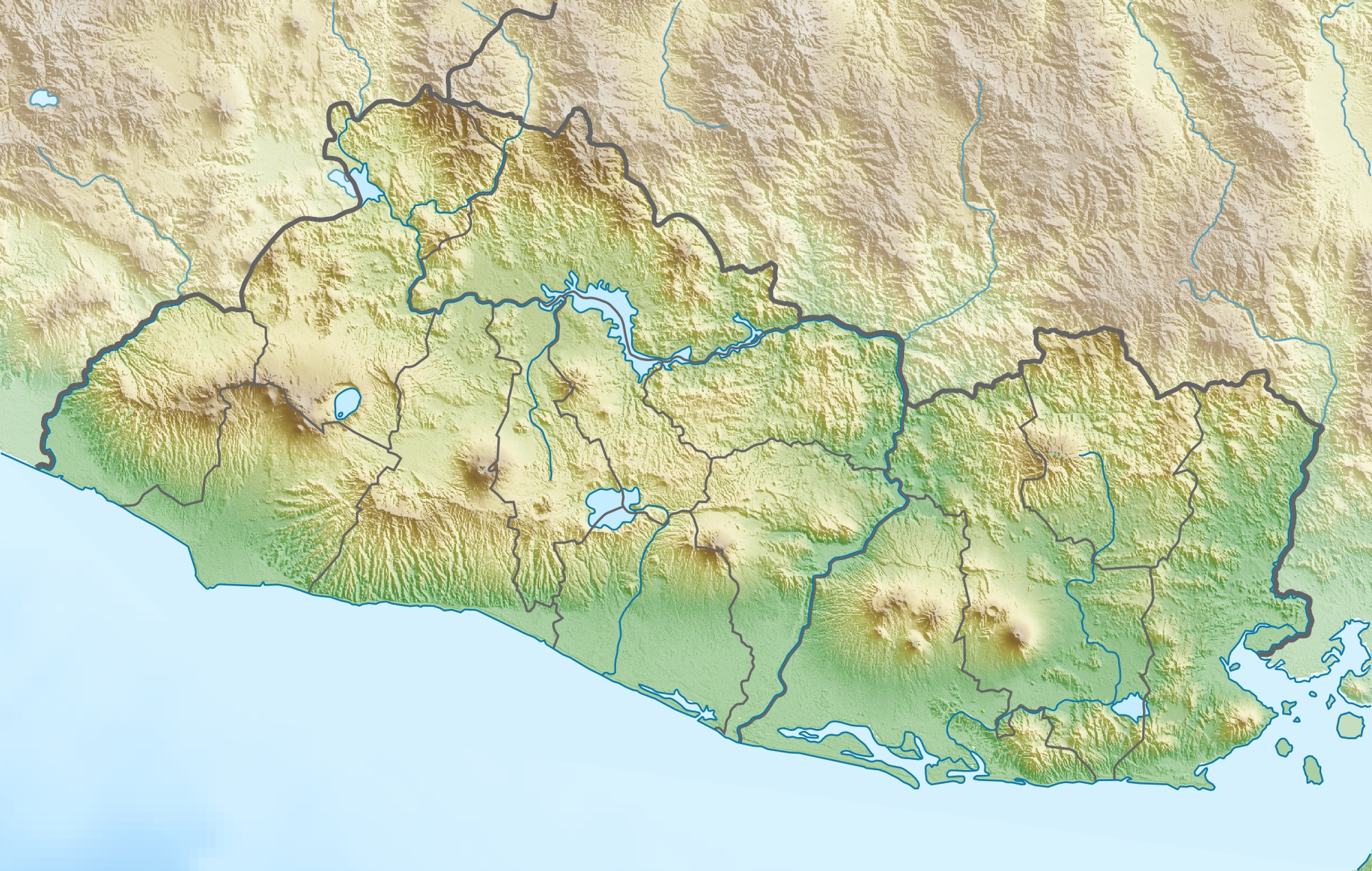
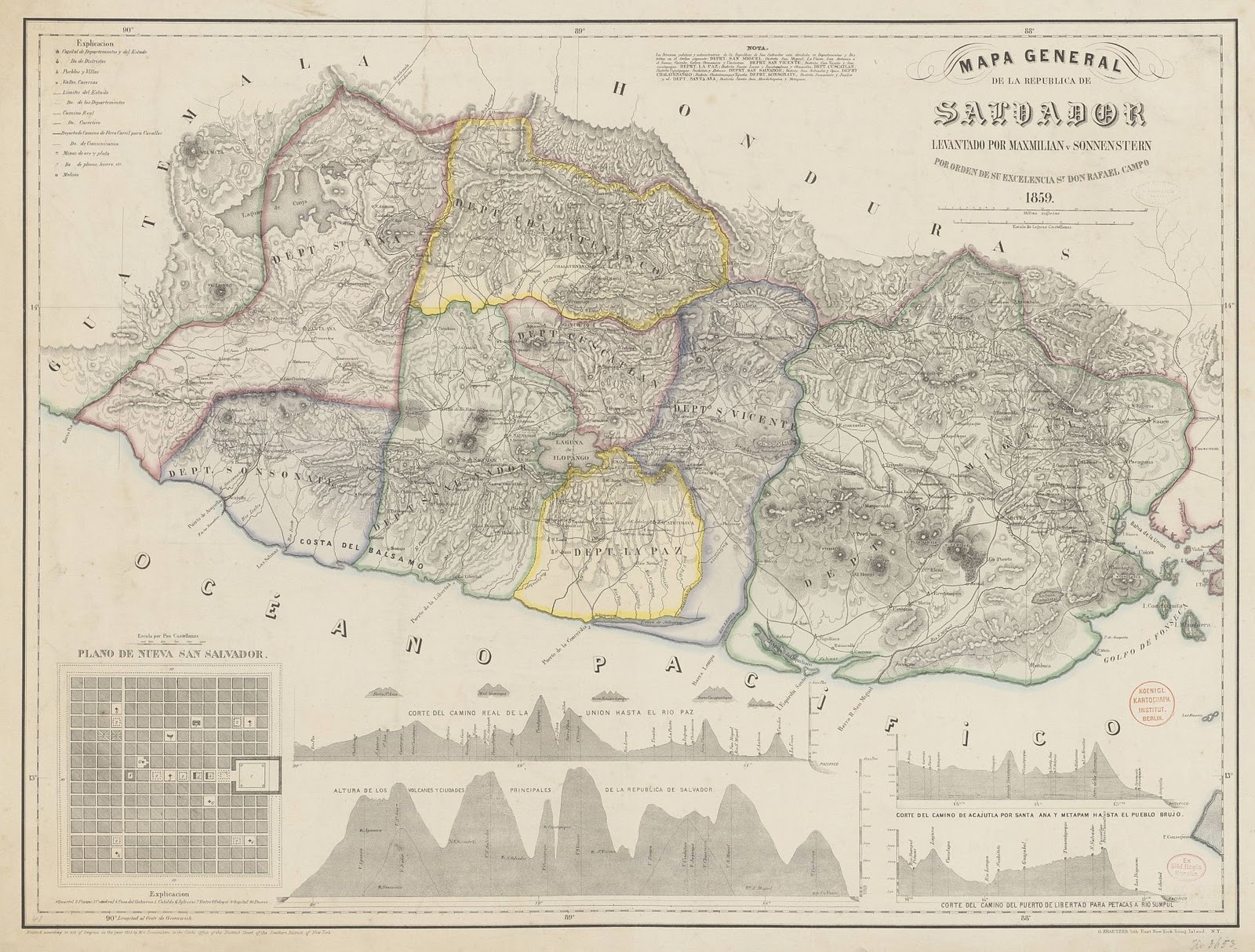
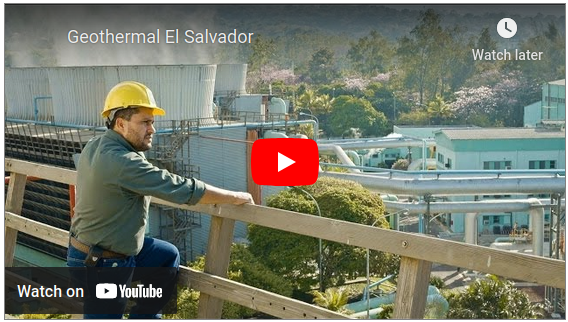
Learn about Geothermal Energy Production in El Salvador
Did we forget something? Let us know on Twitter!
